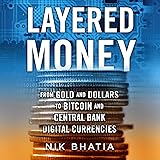Unlocking Digital Wealth: A Deep Dive into Cryptocurrency Holdings and Security
The world of cryptocurrency has captured the attention of many. It promises both innovation and potential financial growth. For those exploring digital assets, understanding various coins and their underlying technology is crucial. Furthermore, safeguarding investments against common risks remains paramount.
The accompanying video offers a personal perspective. It shares top cryptocurrency holdings. It also highlights critical security measures. This article expands on these insights. It provides a foundational understanding for beginner investors. We aim to clarify complex concepts. We also offer actionable advice for protecting your digital wealth.
Understanding Key Cryptocurrency Concepts
To navigate the crypto space effectively, certain terms are essential. These concepts lay the groundwork. They help explain how different digital assets function. Consequently, they influence investment decisions.
The Dynamics of Chain Splits and Forks
Cryptocurrency networks are decentralized. This means they are not controlled by a single entity. Sometimes, disagreements arise among participants. These disputes can concern network upgrades. This often leads to a “fork.”
A fork creates a new version of the blockchain. There are two main types of forks. A “soft fork” is a backward-compatible upgrade. It is like a software update. The original network still recognizes the new rules. Conversely, a “hard fork” is not backward-compatible. It creates two distinct blockchains. Each chain follows its own set of rules.
This process is known as a “chain split.” Holding a cryptocurrency during a hard fork can be advantageous. Investors may receive new coins on the new chain for free. The video mentions Ethereum’s split. This resulted in both Ethereum and Ethereum Classic. The total value of these new coins typically equals the original. However, the distribution of value can be uneven. This depends on factors like “proof of work” on each chain.
Top Cryptocurrency Holdings: A Detailed Exploration
Understanding various cryptocurrencies is vital for any investor. Each digital asset offers unique features. These often target different use cases. The video shares a personal portfolio. It showcases a diverse range of coins. They are ranked by dollar amount held. Let us delve into some notable examples.
Bitcoin Gold (BTG): Accessibility in Mining
Bitcoin Gold emerged from a Bitcoin hard fork. Its primary goal was to decentralize mining. Bitcoin’s original SHA-256 algorithm favors specialized hardware. These are called ASICs. Large corporations often control these. This leads to concerns about centralization.
Bitcoin Gold changed its mining algorithm. It adopted Equihash. This algorithm is GPU-friendly. This means ordinary individuals can mine BTG. It makes mining more accessible. Consequently, it promotes broader participation.
Litecoin (LTC): Digital Silver for Everyday Use
Litecoin is often called “digital silver.” Bitcoin is typically “digital gold.” Litecoin differentiates itself with faster transaction times. It uses the Scrypt cryptographic algorithm. This is simpler than Bitcoin’s SHA-256. Litecoin also has a larger maximum supply. It totals 84 million coins. Bitcoin has 21 million. These attributes make Litecoin more practical for daily transactions. It can confirm transactions four times faster than Bitcoin. This enhances its utility as a real-world currency.
Dash (DASH): Self-Funding and Governance
Dash combines “digital” and “cash.” It focuses on transaction speed and privacy. A key feature is its self-funding mechanism. Dash allocates 10% of its mining rewards. This goes towards network development and operations. This unique model allows Dash to fund its own upgrades. It can maintain independence. This protects it from external corporate influence. Dash also utilizes “masternodes.” These enable features like instant transactions and democratic voting. They form a self-governing and self-sustaining network.
Ripple (XRP): Bridging Banks for Global Transfers
Ripple operates differently. It focuses on facilitating international bank transfers. The XRP token is a key component. It enables instant, low-cost cross-border payments. The network aims to replace traditional banking systems. These are often slow and expensive. Ripple’s target audience is large financial institutions. It seeks to optimize their liquidity and transfer processes. Consequently, some investors view XRP as a hedge. It provides exposure to the existing financial system’s evolution.
IOTA (MIOTA): The Tangle for the Internet of Things
IOTA introduces a novel architecture. It uses “The Tangle” instead of a blockchain. This directed acyclic graph (DAG) structure offers scalability. It also enables feeless transactions. IOTA is designed for the Internet of Things (IoT). It supports machine-to-machine payments. Furthermore, The Tangle is quantum-resistant. This provides a long-term advantage. Traditional blockchain algorithms like SHA-256 could fail under quantum computing. However, IOTA currently faces challenges. These include centralization by its creators. It also has a complex technological foundation. This creates multiple “attack vectors.” Despite these risks, its innovative approach attracts speculative investment.
Bitcoin Satoshi Vision (BSV): Scaling Debates
Bitcoin Satoshi Vision is another Bitcoin fork. It emerged from ideological disagreements. The focus of BSV is massive on-chain scaling. This means increasing block size significantly. Its success is heavily tied to claims of Satoshi Nakamoto’s identity. This has led to controversy. Many investors received BSV during the fork. They often hold it due to its free acquisition. Its future remains uncertain. It depends on resolving these identity claims and technical debates.
Bitcoin Cash (BCH): On-Chain Scaling Advocates
Bitcoin Cash also stemmed from a Bitcoin fork. This split focused on block size. Bitcoin Cash advocates for larger blocks. This allows more transactions per block. It scales “on-chain.” The original Bitcoin (BTC) prefers “off-chain” scaling solutions. These are like the Lightning Network. Both chains aim to solve scalability issues. However, they use different approaches. Investors often hold both. This allows them to benefit from either path’s potential success.
Bitcoin (BTC): The Original Digital Gold
Bitcoin remains the flagship cryptocurrency. It was created in 2009. It introduced blockchain technology to the world. Many consider it “digital gold.” Its finite supply of 21 million coins drives scarcity. Bitcoin offers a store of value. It also acts as a hedge against inflation. Early adoption was risky. The speaker recalled buying Bitcoin at $600 in 2014. He sold it for a loss. This underscores market volatility. Despite its price swings, Bitcoin shows resilience. Experts often predict significant future growth. Some forecasts suggest $100,000 or even $0. This highlights its high-risk, high-reward nature. Its end goal is to become a new global standard.
Ethereum (ETH): Powering Decentralized Applications
Ethereum is a powerful blockchain platform. It supports smart contracts. These are self-executing agreements. Ethereum enables decentralized applications (DApps). It also powers decentralized autonomous organizations (DAOs). These are organizations without central leadership. Ethereum attracts top developers. They contribute to its robust ecosystem. The speaker noted a significant investment in Ethereum. He bought $25,000 worth at $200. This demonstrated confidence in its potential. Ethereum is a cornerstone of the decentralized web (Web3).
Essential Cryptocurrency Security Strategies
Investing in cryptocurrency involves inherent risks. Protecting your digital assets is crucial. The speaker emphasizes several key security practices. Adhering to these principles can prevent significant losses. Statistics highlight the importance of vigilance. For example, 336 Bitcoin were stolen from an exchange in one incident. Michael Terpin lost $24 million due to a SIM swap scam. These events underscore the need for strong security protocols.
The “Not Your Keys, Not Your Crypto” Principle
This adage is fundamental. If you do not control your private keys, you do not truly own your cryptocurrency. Centralized exchanges often hold your keys. For instance, Robinhood manages crypto on its platform. Users cannot transfer these assets off the exchange. This means Robinhood controls your crypto. Should a chain split occur, forked coins may be withheld. Consequently, gaining direct control over your assets is paramount.
Leveraging Hardware Wallets for Cold Storage
Hardware wallets offer superior security. They provide “cold storage.” This means private keys are stored offline. This significantly reduces hacking risks. Even if the device is lost or damaged, assets remain safe. They can be recovered with a seed phrase. This phrase is a series of words. It is crucial to store it securely offline. Hardware wallets are recommended for holdings over $1,000. They protect against exchange hacks and online thefts. This makes them an indispensable tool for serious investors.
Bolstering Account Security with 2FA and SIM Protection
Basic account security is equally important. Two-factor authentication (2FA) adds a layer of defense. It requires a second verification method. This protects against unauthorized access. For mobile 2FA, contact your phone carrier. Request that they never issue a replacement SIM card. This should only be done in person. This prevents SIM swap scams. Recording these conversations provides evidence. It protects against employee negligence. These proactive steps are vital for safeguarding your accounts. They prevent attackers from impersonating you and stealing funds.
The Broader Vision of Cryptocurrency
The ultimate goal of cryptocurrency extends beyond wealth accumulation. It seeks to decentralize financial control. Historically, money has evolved. It moved from gold to cash, then to credit cards. Digital transactions followed. Cryptocurrency represents the next step. It aims to return control to individuals. This shifts power away from governments, corporations, and banks.
The journey towards this future is volatile. The speaker noted his portfolio fluctuated greatly. It went from $12,000 to $111,000. This experience built emotional resilience. Such volatility is common in crypto markets. Yet, the underlying mission persists. Cryptocurrency champions financial freedom and autonomy for the people. It challenges existing paradigms. This makes it a revolutionary financial technology.







